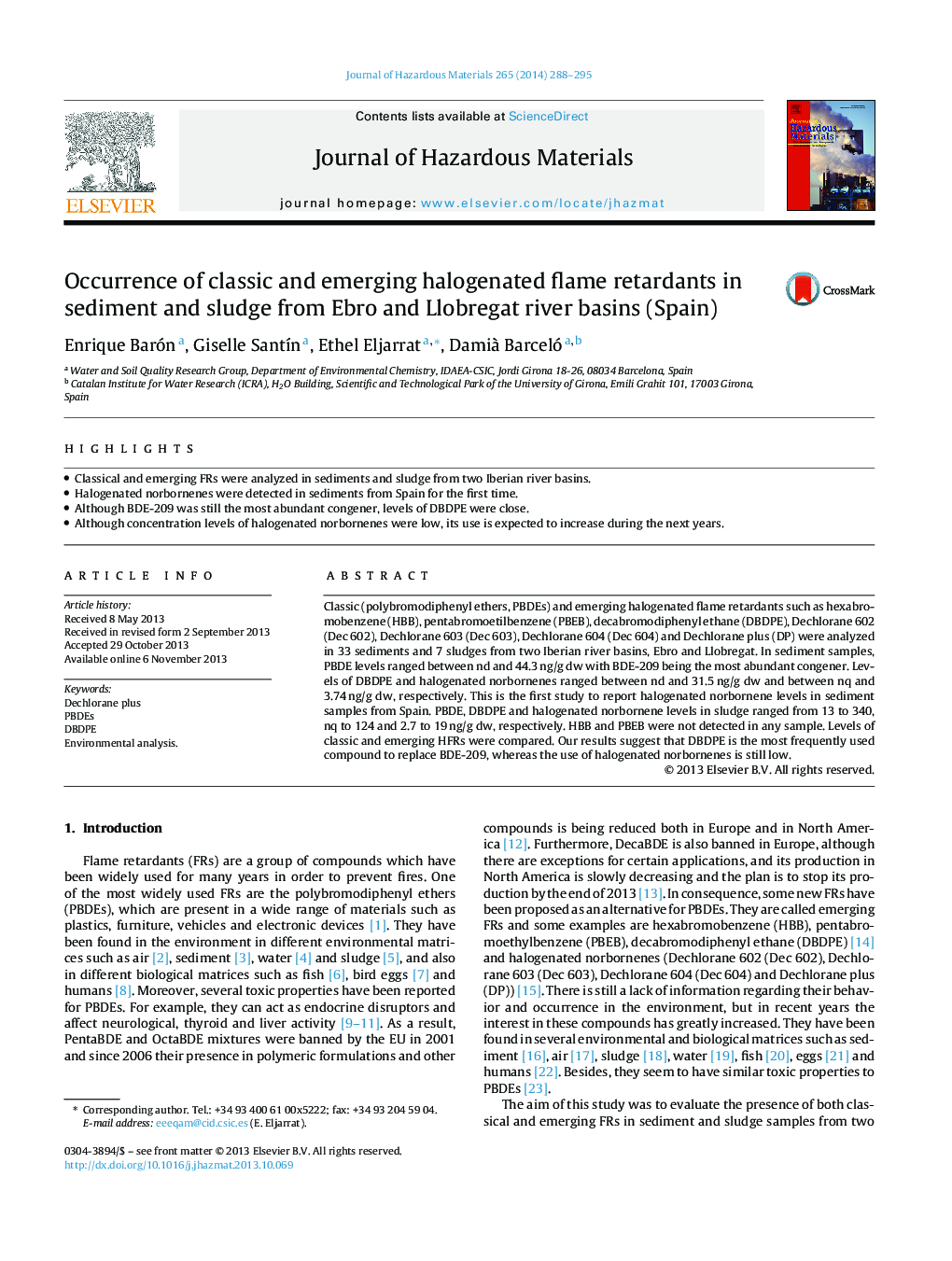| Article ID | Journal | Published Year | Pages | File Type |
|---|---|---|---|---|
| 576961 | Journal of Hazardous Materials | 2014 | 8 Pages |
Abstract
Classic (polybromodiphenyl ethers, PBDEs) and emerging halogenated flame retardants such as hexabromobenzene (HBB), pentabromoetilbenzene (PBEB), decabromodiphenyl ethane (DBDPE), Dechlorane 602 (Dec 602), Dechlorane 603 (Dec 603), Dechlorane 604 (Dec 604) and Dechlorane plus (DP) were analyzed in 33 sediments and 7 sludges from two Iberian river basins, Ebro and Llobregat. In sediment samples, PBDE levels ranged between nd and 44.3Â ng/g dw with BDE-209 being the most abundant congener. Levels of DBDPE and halogenated norbornenes ranged between nd and 31.5Â ng/g dw and between nq and 3.74Â ng/g dw, respectively. This is the first study to report halogenated norbornene levels in sediment samples from Spain. PBDE, DBDPE and halogenated norbornene levels in sludge ranged from 13 to 340, nq to 124 and 2.7 to 19Â ng/g dw, respectively. HBB and PBEB were not detected in any sample. Levels of classic and emerging HFRs were compared. Our results suggest that DBDPE is the most frequently used compound to replace BDE-209, whereas the use of halogenated norbornenes is still low.
Keywords
Related Topics
Physical Sciences and Engineering
Chemical Engineering
Chemical Health and Safety
Authors
Enrique Barón, Giselle SantÃn, Ethel Eljarrat, Damià Barceló,
